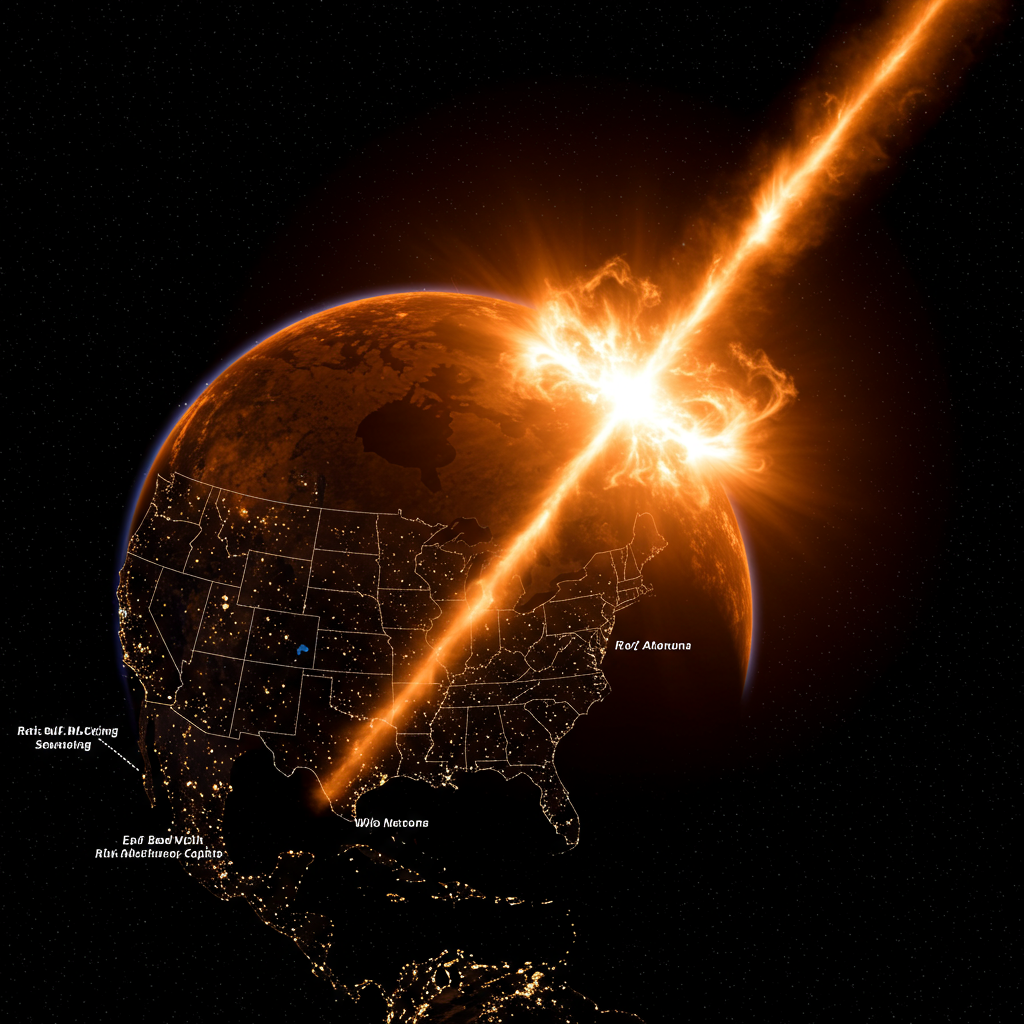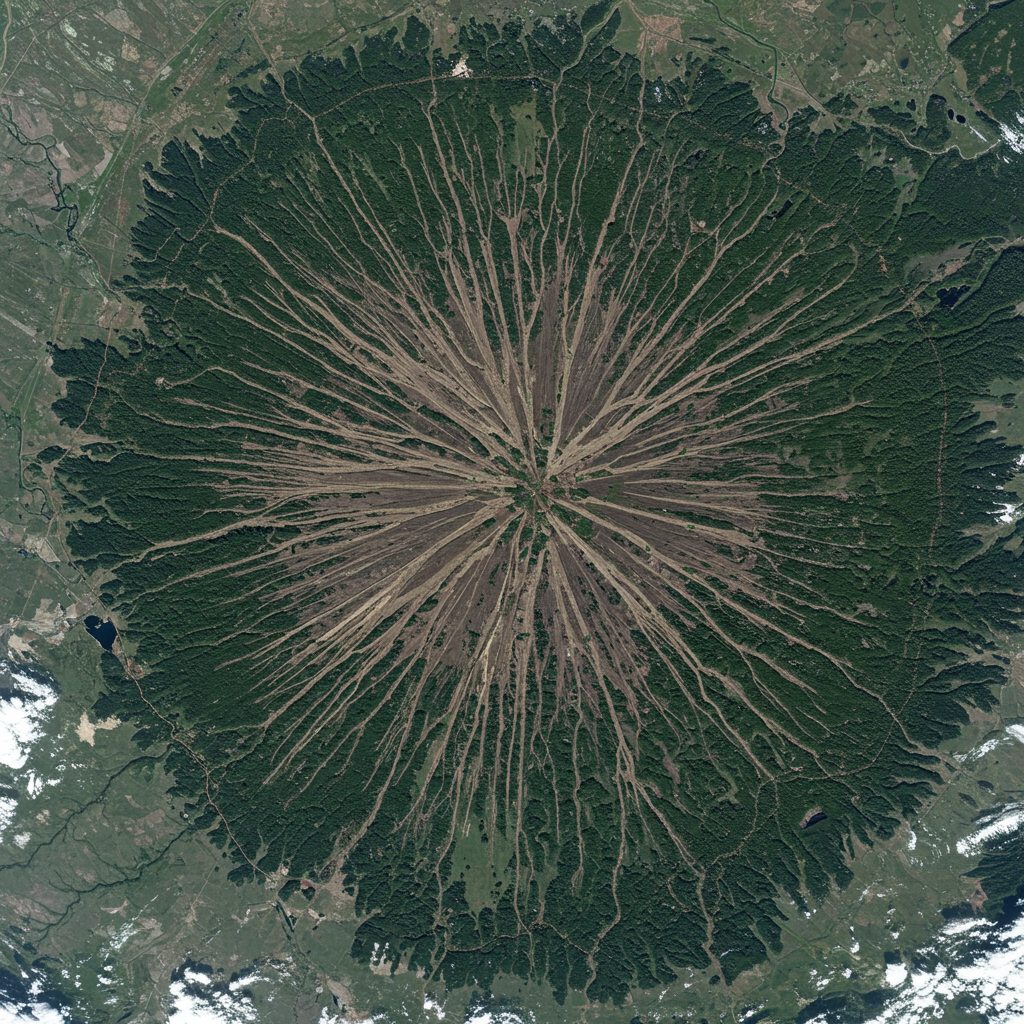Recent days have seen a surge in solar activity, punctuated by powerful solar flares that are impacting Earth. One such event, an “extreme ultraviolet flash” originating from the sun, caused a significant radio blackout across large parts of the United States this past Thursday, June 20th.
Captured by NASA’s Solar Dynamics Observatory satellite, the flare occurred on June 19th at 11:50 p.m. UTC. It was classified as an X1.9 flare, placing it in the highest category on the solar intensity scale—the powerful X-class. These aren’t minor events; according to NASA, solar flares are the most energetic explosions in our solar system, potentially containing energy equivalent to a billion hydrogen bombs.
Understanding Solar Flares and Their Impact
Solar flares are essentially intense bursts of radiation from the sun. They are classified on a scale from A (smallest) up to X (largest), with each step representing a tenfold increase in energy. X-class flares, like the one on June 19th, are capable of causing significant disruption, including planet-wide radio blackouts and long-lasting radiation storms.
The radiation emitted by the X1.9 blast heavily ionized Earth’s upper atmosphere. This ionization disrupts the path of high-frequency radio waves, leading to signal degradation or complete loss on the sunlit side of the planet. In this case, the blackout was most pronounced over the Pacific Ocean, specifically affecting frequencies below 25 Megahertz (MHz). Amateur radio operators, particularly those in Hawaii, were among the most likely to notice this signal loss.
A Period of Heightened Solar Activity
This X1.9 event wasn’t an isolated incident. It followed closely on the heels of other notable solar storms:
June 15th M8.3 Flare: Just days earlier, an M8.3 flare (an M-class flare is the second-highest category, and this one “almost reached an X-class”) caused a similar shortwave radio blackout, but this one affected frequencies below 20 MHz across a broader area of North America, including the entire continental United States. This event was also significant because it did launch a Coronal Mass Ejection (CME)—a massive burst of plasma and magnetic field lines—into space, with a flank expected to hit Earth.
May 14th X2.7 Flare: A much stronger X2.7-class flare erupted on May 14th from sunspot region AR4087. This flare was considered one of the most powerful recorded recently. It caused R3-level (“strong”) radio blackouts primarily over the Middle East, Europe, Asia, and Africa on the sunlit side, with some reports of minor power grid degradation on the eastern US seaboard. While this flare did not send a CME directly towards Earth at the time, the originating sunspot, AR4087, is highly active and has been rotating towards a position directly facing Earth (“geoeffective”), raising concerns about potential future powerful events.
Flares vs. CMEs: Different Impacts
It’s important to distinguish between solar flares and Coronal Mass Ejections (CMEs), although they often originate from the same active sunspot regions.
Flares: These are bursts of radiation that travel at the speed of light, impacting Earth’s upper atmosphere almost instantly and causing radio blackouts.
CMEs: These are expulsions of solar material (plasma and magnetic fields) that travel much slower, arriving at Earth hours or days later. If a CME is directed towards Earth, its interaction with our planet’s magnetic field can trigger geomagnetic storms.
Interestingly, while the June 15th M-class flare did launch a CME, the recent June 19th X-class flare did not. However, the intense explosion on June 19th reportedly destabilized a massive magnetic filament in the sun’s southern hemisphere, and the eruption of this filament could potentially produce a CME that might head towards Earth.
Geomagnetic Storms and Aurora Displays
When a CME does arrive at Earth and interacts with our magnetic field, it can cause a geomagnetic storm. These storms are responsible for some of the most spectacular natural light displays on Earth: the aurora borealis (northern lights) and aurora australis (southern lights).
Auroras form when high-energy electrons from space, guided by Earth’s magnetic field, collide with atoms and molecules in the upper atmosphere. This collision excites them, and as they return to their normal state, they release energy in the form of light, creating the vibrant colors of the aurora.
The intensity and visibility of auroras are directly related to the strength of geomagnetic activity, which in turn is driven by solar storms like CMEs. Stronger storms can produce brighter auroras visible from much lower latitudes than usual. We’ve seen instances of this recently; strong solar activity last year allowed people in places like parts of Japan and even some US states typically far south of the Arctic Circle (like Idaho, Michigan, Montana, and Wisconsin) to witness these stunning displays.
Increased Activity and Potential Risks
These recent events highlight the sun’s increasing activity as it approaches the peak of its current cycle, known as solar maximum. This phase brings a higher frequency and intensity of solar flares and CMEs, increasing the risk of space weather impacts on Earth.
Scientists and government agencies are increasingly concerned about humanity’s preparedness for extreme space weather events. Simulated emergency drills have shown that a sufficiently powerful solar storm could cause widespread blackouts lasting weeks, disrupt communication systems, and disable GPS, leading to significant infrastructure challenges. A major hurdle is the limited warning time for incoming CMEs—often as little as 30 minutes to determine their potential geomagnetic impact. Real-world events, like the “Gannon Storm” on May 10th, 2024, which caused temporary satellite issues and radio blackouts, underscore this vulnerability.
Space weather agencies like NOAA and NASA continue to monitor active sunspot regions carefully, providing forecasts and warnings. As potentially geoeffective regions like AR4087 rotate into view, the chance of disruptive flares or CMEs increases.
In conclusion, recent powerful solar flares have demonstrated the tangible effects of space weather, from immediate radio blackouts affecting communications to the potential for future geomagnetic storms impacting technology and bringing spectacular aurora displays to lower latitudes. Monitoring the sun’s activity remains crucial in our increasingly technology-dependent world.




